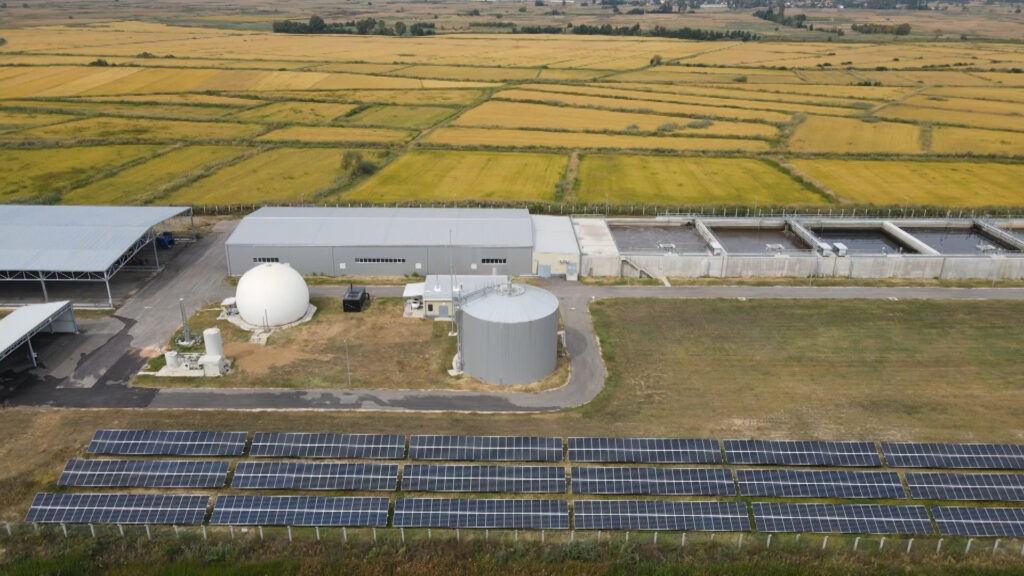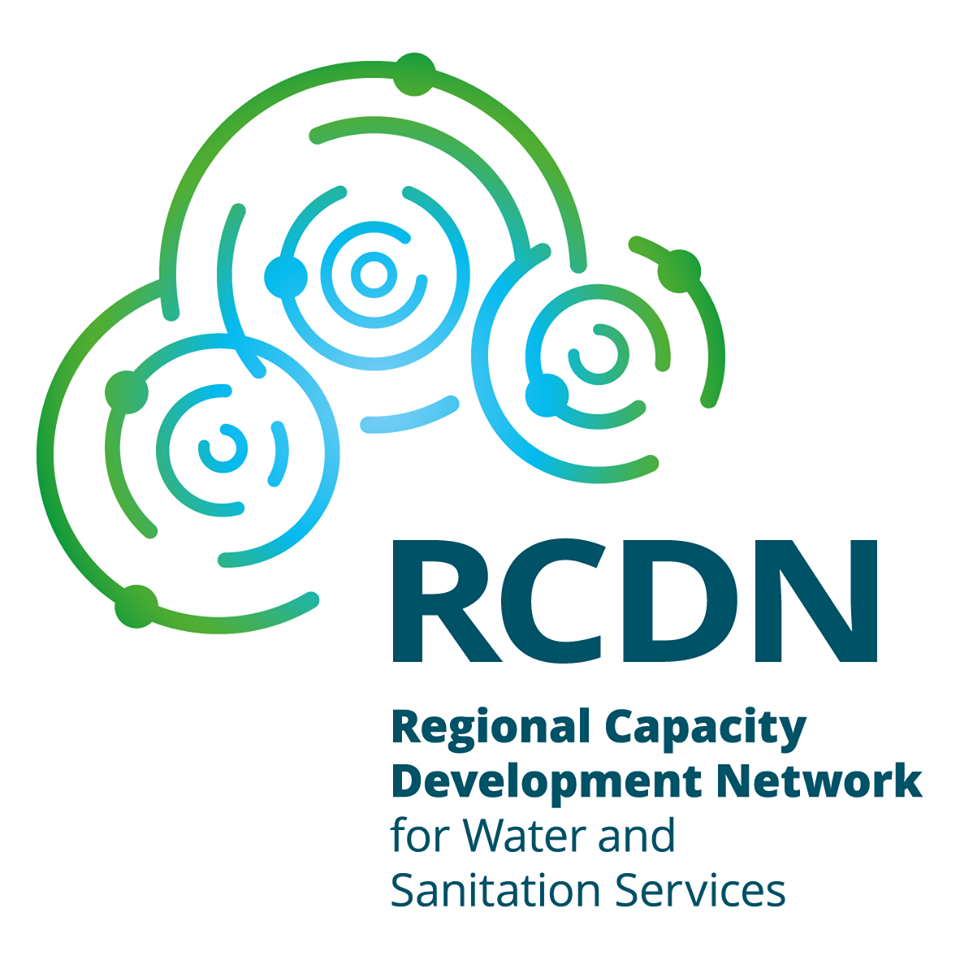A SAMPLE OF WASTEWATER – SOURCE OF KNOWLEDGE ON COVID-19
Wastewater treatment plants are key parts of the infrastructure and facilities of strategic importance for water and sanitation services and the fight against the covid-19 virus. Wastewater can be used for further research which again puts water and sanitation services in focus as sewage and wastewater treatment plants can serve as a source of data for monitoring of pandemic and for further research as well as for establishing early warning system.
The challenge of fighting a pandemic is also an opportunity for water and sanitation services that are, in normal conditions and when everything works, “invisible” but when the service does not work then they are the “top” topic of the public. This is an opportunity to change the perception of water and sanitation services and water utilities and to return it in a positive sense in the focus of the public. This is also a possibility to achieve greater appreciation of water and sanitation services and the efforts of municipalities and water utilities to ensure their smooth operation and greater coverage of services. => read more
All countries in the world are fighting with the pandemic caused by the covid-19 virus. Many of the governments are forced to introduce additional and in the wider public unpopular precautionary measures such as partial or complete lockdowns of parts, whole cities or even whole countries. Those lockdowns have devastating impact on the economies throughout the world.
The challenge was that the most obvious way of virus monitoring – testing person by person – has already proved to be a huge and expensive challenge. In addition, the lack of adequate testing in many places has made it difficult to keep pace with the highly infectious coronavirus.
In the meantime different scientists around the world were studying the novel coronavirus from many different perspectives in an effort to better understand how it infects the body and spreads from person to person. The approach is to identify mitigation measures to diminish its effects and minimize the damage until drug treatments and a vaccine are developed.
With the public awareness campaigns the most of the people know that an infected person emit lots of this virus through aerosols, but less people are aware that the infected person actually emits more small virus particles in his/her faeces. That implies there\’s potentially a lot of information in the wastewater. Each sample of waste water can be considered as a source of precious knowledge on covid-19 and a snapshot of that community\’s health.
Independent scientific teams in the Netherlands, Switzerland, France, Germany, USA, Australia and elsewhere, have recently applied new methods which discovered small concentrations of covid-19 in the wastewater. Scientists who conducted those studies emphasize that what they are picking up is not live, infectious virus, but dead particles or fragments of the virus’s genetic material that are not infectious. It has been confirmed that by the time the virus in the wastewater reaches wastewater treatment plants, it\’s still possible to read its RNA. However, no one knows yet if and for how long the virus remains contagious in sewage.
The approach taken by the researchers was to analyze wastewater samples so that health officials can detect the virus early enough before the disease is diagnosed clinically. Wastewater reflects properly what has been discharged by a population, so it can also help to detect the infected communities.
However the approach is not a new one. It has been already used for tracking use of drugs and other diseases such as polio. For example health officials are working to eradicate polio around the globe. In Israel, an outbreak of polio was spotted early through the wastewater system so they were able to target the areas with the vaccination programme and monitor the success.
The idea is that measuring overall virus levels in the wastewater over time could indicate whether an outbreak is growing or shrinking, potentially showing that trend earlier than patient testing would. So far, the samples have consistently shown a higher concentration of virus in places with more intense outbreaks.
The studies conducted at the early outbreak of the pandemic show that in some cities they\’ve been able to detect the coronavirus in sewage the same week the first cases appeared. Traces of the covid-19 virus were detected in wastewater in Milan and Turin in northern Italy as early as December 2019, according to research done by the Italian Institute of Health. The institute conducted an analysis of wastewater collected from the period before the \”official outbreak\” of the coronavirus in Italy, where the first case was not confirmed until 21st February 2020. The results of the research of the Italian Institute are in line with the analysis of the samples of hospital patients in neighboring France, which found that the positive cases of the coronavirus date back to December last year. Dutch scientists managed to find a coronavirus in the wastewater of the City of Amersoft on 5th March 2020, even before the first case of coronavirus was confirmed in the city. Analysis of the wastewater samples in the metropolitan area of New Haven, Connecticut, USA with 200.000 inhabitants, allowed researchers to track the rise and fall of positive cases and hospital admissions days before they were officially known or recorded. Based on the RNA concentrations in the wastwater, the researchers were able to know the swing in cases up to two days before samples could be collected, one-four days before hospital admissions and six-eight days before positive results were reported. Similar results were reported in other countries.
Scientists won’t be able to calculate the exact number of infections using these data, since there is too much variation in how much of the virus each patient sheds. Important is to track the trend instead. On a wider scale, wastewater sampling would be able to estimate the approximate number of people infected in a geographic area without having to test every person.
The goal is to develop an early warning system by monitoring the samples taken from the large wastewater treatment plants. Thus monitoring the wastewater for the presence of the virus can provide public health officials with a relatively cheap and reliable tool that could remove some of the guesswork about when to impose local lockdowns — or when to ease or end them.
For example with samples from 20 large wastewater treatment plants distributed across Switzerland, the public health officials could monitor wastewater from around 2.5 million people. If the samples are analyzed rapidly, the public health officials could probably detect a resurgence of infections earlier than with diagnostic tests – about a week earlier – especially during the period when the lockdown is being lifted.
The analysis of the wastewater can help establish covid-19 community hot spots by tracking the increase in the concentration of the virus and the level of infection rate. However, it should be pointed out that data from wastewater monitoring should always be used as a complement to epidemiological data.
Due to the fact that it is not feasible to test every individual for the coronavirus, wastewater monitoring provides a powerful tool to determine the “situation’ in a city or a province, and enables decision makers with information basis upon which to take possible additional precautionary measures or, at some point, decide on an “intelligent” lifting of or putting down the lockdown.
Researchers have been also working on establishing accurate forecast models using the available data, which estimates the likely number of cases in an area based on the amount of virus in the wastewater. So far, imperfect models reveal that many more people have covid-19 than official counts suggest. However, there are numerous challenges ahead in the research such as: fast transport of samples from distant wastewater treatment plants, capacity for storage and rapid testing the wastewater samples, impact of dilution of wastewater with clean water in case of rains, etc.
Last but not least, European Commission on their web site points out that tracking wastewater is a cost-effective preparedness and resilience tool, whereas some initial estimates show that securing effective monitoring of one treatment plant requires approximately 25.000 EUR/year.
Although genetic material from the novel coronavirus can be detected in the wastewater, currently there is no evidence that covid-19 virus spreads through either water or wastewater. Water utilities were able to maintain the service and supply drinking water of proper microbiological quality and fit for consumption even during the pandemic.
Thus, we can conclude that wastewater treatment plants are key parts of the infrastructure and facilities of strategic importance for water and sanitation services and the fight against the covid-19 virus. Wastewater can be used for further research which again puts water and sanitation services in focus as sewage systems and wastewater treatment plants can serve as a source of data for monitoring of pandemic and for further research as well as for establishing early warning system.
The challenge of fighting a pandemic is also an opportunity for water and sanitation services that are, in normal conditions and when everything works, “invisible” but when the service does not work then they are the “top” topic of the public. This is an opportunity to change the perception of water and sanitation services and water utilities and to return it in a positive sense in the focus of the public. This is also a possibility to achieve greater appreciation of water and sanitation services and the efforts of municipalities and water utilities to ensure their smooth operation and greater coverage of services.




